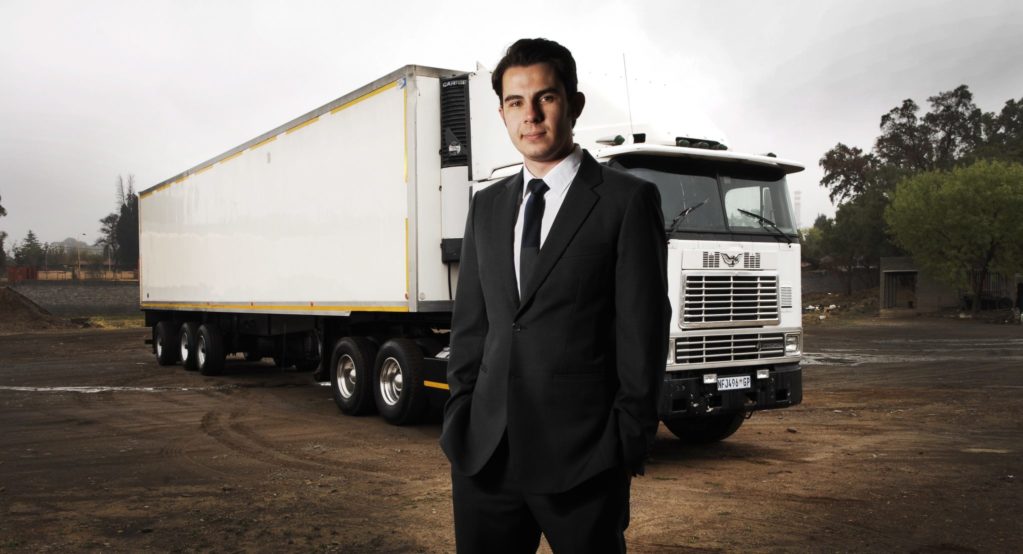Out-of-home advertising, such as billboards, is big business worldwide and is growing each day. The figure sits at $26.4 billion—an increase of 8.3%—in 2011 alone. Pinto saw a gap in the market when he watched thousands of unbranded delivery trucks sitting in traffic: why not use their perfectly unmarked platforms as a moving billboard?
Most trucks have Global Positioning Systems (GPS) that track their routes and location, which is the perfect tool for targeting local and national consumers.
“We have GPS units in all our advertising trucks so we know where they are at any time. Every month we produce an operational report that provides details of all the travel times of the advertisement on the truck.”
Pinto said that the advantage of this medium is that companies can choose which areas they wish to target such as the East Rand specifically or a road such as the M1 between Johannesburg and Pretoria or the whole city. Advertisers can choose the area they want to target and later move the same signage to another area, which allows them to monitor any change in consumer behavior. He points out that South African retailer Woolworths has taken advantage of their national distribution to brand themselves.
In South Africa, billboards dominate the outdoor advertising landscape. Primedia Outdoor, a leading South African media group, owns 15,000 advertising panels across the country and claims that motorists and commuters spend around 30-45 minutes daily, in weekday traffic and weekly peak hour traffic volume is as high as 277,726 commuters. This is a large market.
Loading...
Pinto researched the outdoor advertising market in countries such as the United States and the United Kingdom and discovered a gap for the African advertising landscape.
Securing the rights to prime spots for billboard advertising is expensive. But trucks on the road are already using the routes and he believes that commuters will be drawn to an eye-catching billboard on the move.
“We have a large, varied fleet available, so whether the customer needs a print space of six meters wide or 15 meters wide we have three different size options for them to choose from,” he says.
“They are billboards without a fixed steel infrastructure and are very cost effective at about a third of the traditional cost of fixed billboard advertising,” says Pinto.
While street pole advertising can also be effective, Pinto said that it is becoming another piece of “street furniture” that is severely cluttered.
The concept doesn’t add to a carbon footprint as the trucks he uses are already on the road for commercial carriers.
“Given that trucks are already on the move, one may as well make use of them. They go everywhere,” he says.
He lists the advantages of truck-side advertising after conducting market research:
- 85% more reach and 20% more frequency than conventional media
- 91% of people report that they notice fleet branding
- 52% successfully record the adverts
Although the business is just getting off the ground—it was launched on September 1—advertising agencies have expressed interest and he has signed a number of business agreements with them and trucking logistics companies. For the trucking companies, it is another source of revenue and means little down time as the boards can be fitted within a few hours.
The key to managing the operation is the ease of construction and safety features. It takes two to three hours to fit the trucks with the tension frame that holds the signage.
“A truck can travel at 160 kilometers an hour with an 18 meter panel and it won’t come off,” says Pinto.
These can be fitted over the weekend when most trucks are not being used. It takes only an hour to switch one panel for another on a fitted truck. The panels are manufactured by local printers. The advantage is that the panels can be removed and displayed at different locations or routes depending on the needs of the campaign. The client also retains ownership of the panel as opposed to painted signs on trucks.
As for the threat from social media platforms, Pinto believes that the way to go is to integrate OOM advertising with social media platforms such as Facebook and Twitter to enhance the product offering rather than seeing them as competitors.
“We plan to work with those platforms. Their success is our success.”
He has agreements with companies in Johannesburg and Cape Town but says that within a year he will be offering the service in three cities using at least 100 trucks. Pinto admits that starting a new venture is difficult.
“Starting anything is really difficult but if you believe in your product, and you can get another 100 people to also believe in it, then success will come.”
Although born in Johannesburg of Portuguese decent, Pinto speaks with an American accent and has visited 22 countries after studying business management and philosophy at the University of Pretoria.
“I guess I just watched too much TV when I was young,” he says.
He is a firm believer in global entrepreneur Richard Branson and is an enthusiastic member of his Centre of Entrepreneurship in Johannesburg. He quotes Branson as saying: “Do good, have fun and the money will come.”
Loading...
